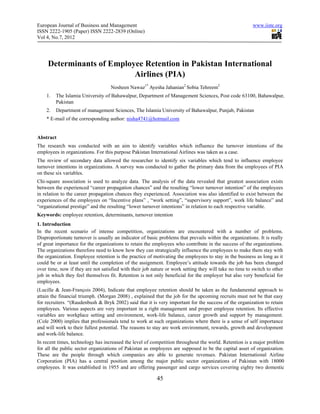This document summarizes a study on the determinants of employee retention at Pakistan International Airlines (PIA). The study identified six variables that influence employee turnover intentions: career progression chances, incentive plans, work setting, supervisory support, work-life balance, and organizational prestige. A survey was conducted of PIA employees to analyze the relationship between these variables and turnover intentions. The analysis found the strongest association between career progression chances and lower turnover intentions. Associations were also found between positive experiences of incentive plans, work setting, supervisory support, work-life balance, and organizational prestige, and lower turnover intentions.








